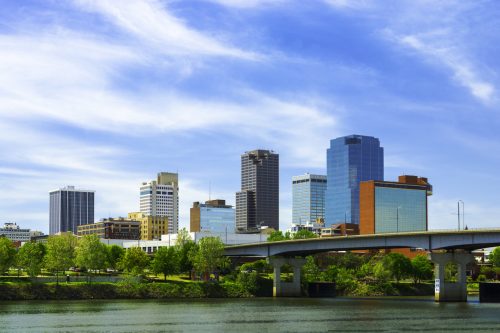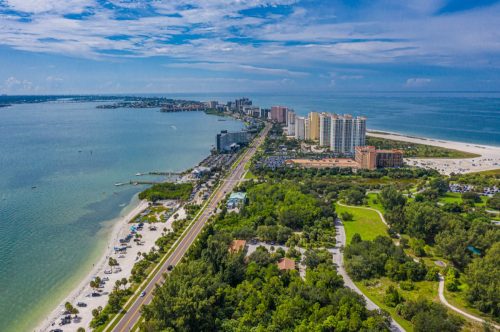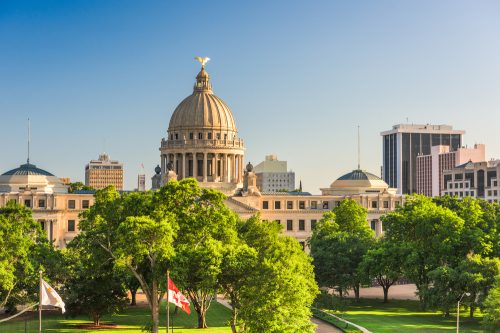The Delta variant has wreaked havoc across the U.S. over the last few months, fueling a rapid increase in cases in nearly every state, and hitting areas where vaccination rates are lower especially hard. Now, the highly infectious COVID variant appears to be declining in some states, just as it’s rising in others. According to data from Johns Hopkins, there were nearly 300 percent more new COVID cases this Labor Day weekend than there were last year in 2020. So, why is the situation starting to improve in areas that until recently saw the most dramatic spikes?
RELATED: 74 Percent of Delta Variant Infections Have This in Common, New Study Says.
Mary Jo Trepka, MD, an infectious disease epidemiologist at Florida International University who tracks the trajectory of the virus in the state, told The Wall Street Journal that rising hospitalizations in certain states due to the Delta variant might have encouraged some people to take more COVID precautions that they may not have taken beforehand.
According to the WSJ, vaccination rates rose in many states hit hardest by the variant in July and August. This combination of people with some level of immunity from prior infection and people with strong protection from vaccination has contributed to the slowdown of the variant in specific states, Trepka said.
“I don’t know if we’ve peaked for all time, but the wave that was currently ongoing seems to have crested and is falling in some states, but is rising in others,” Andrew Noymer, PhD, an infectious disease epidemiologist and demographer at the University of California, Irvine, told the WSJ.
RELATED:
For more up-to-date information, sign up for our
daily newsletter.
Scott Gottlieb, MD, a virus expert and former head of the Food and Drug Administration (FDA), told CNBC in mid-August that it’s suspected the Delta variant will travel through the country in waves. More recently, he said that the Northeastern states have not yet hit their “true Delta wave,” which is likely to come soon. “I think our true Delta wave is going to start to build after Labor Day here in the Northeast and the northern part of the country,” Gottlieb said Sept. 3 on CNBC’s Squawk Box.
States expected to be hit harder by the Delta variant next include New York and Connecticut, per Gottlieb, as well as Kentucky, West Virginia, and North Carolina, according to the WSJ. “What was in the South is now going to spread due north and then west,” Peter Hotez, MD, dean of the National School of Tropical Medicine at Baylor College of Medicine, told the news outlet.
As for where the Delta variant has peaked, read on to find out which four states have seemingly seen the worst of this surge.
RELATED: Don’t Go Here While the Delta Variant Is Surging, CDC Says.


Just a month ago, Arkansas was experiencing such a swarm of new COVID hospitalizations as a result of the Delta variant that the state only had eight available ICU beds. According to The New York Times, Arkansas has experienced a 20 percent decrease in new cases over the last two weeks, as well as a 7 percent lower rate of hospitalizations and 17 percent less deaths.
“Our numbers are lower than last week, as expected. Hospital space has continued to become available over the past few days, but we need to protect ourselves with vaccinations and that also reduces the burden on our health care workers,” Gov. Asa Hutchinson tweeted Sept. 6. He added on Sept. 8 that the state had also seen fewer cases from the Labor Day weekend.


Florida was considered the hardest hit state by the Delta variant at one point, accounting for about one in five cases nationally, according to the WSJ. But now, the state has seen a 23 percent decrease in cases during the last 14 days, as well as a 17 percent decrease in hospitalizations, per the NYT.
“There are some good indications that things are starting to look better in Florida,” Trepka said. However, she added that cases and hospitalizations in this state might continue to fluctuate in the coming months due to how hard it’s been hit. “I don’t think we’ve had the fallout yet with the schools,” she warned.


Mississippi had one of its “darkest months” during the entire pandemic in August, as the Delta variant accounted for one-fifth of the state’s total cases since the virus first appeared, according to Mississippi Today. But the state is slowly regaining its bearings. According to the NYT, Mississippi is experiencing negatives across the board. Over the last two weeks, the state has seen a 32 percent lower rate of cases, a 13 percent decrease in hospitalizations, and a 1 percent decrease in virus-related deaths.


Missouri has been experiencing a surge of cases, hospitalizations, and deaths since May because of the Delta variant, according to the Missouri Independent. But as the state enters its fifth month of Delta’s dominance, its surge appears to finally be falling. Cases in Missouri have dropped 15 percent over the last two weeks, according to the NYT. Hospitalizations and deaths are also down 12 percent and 58 percent, respectively.
RELATED: If You Got This Vaccine, You May Be More Protected Against Delta.